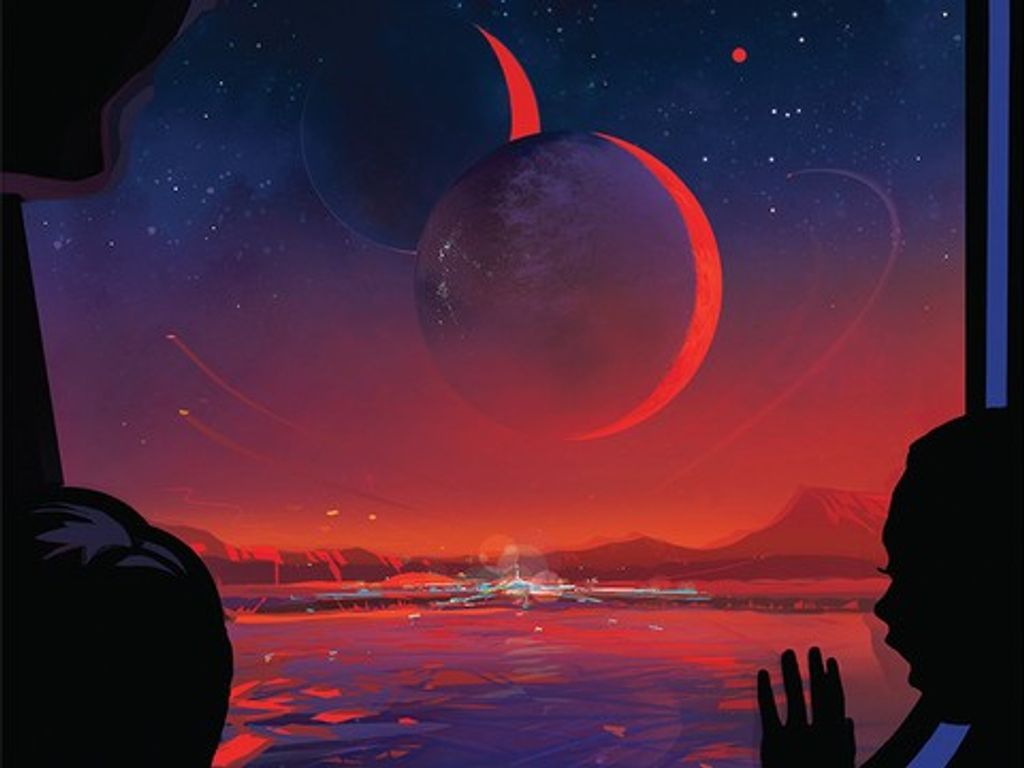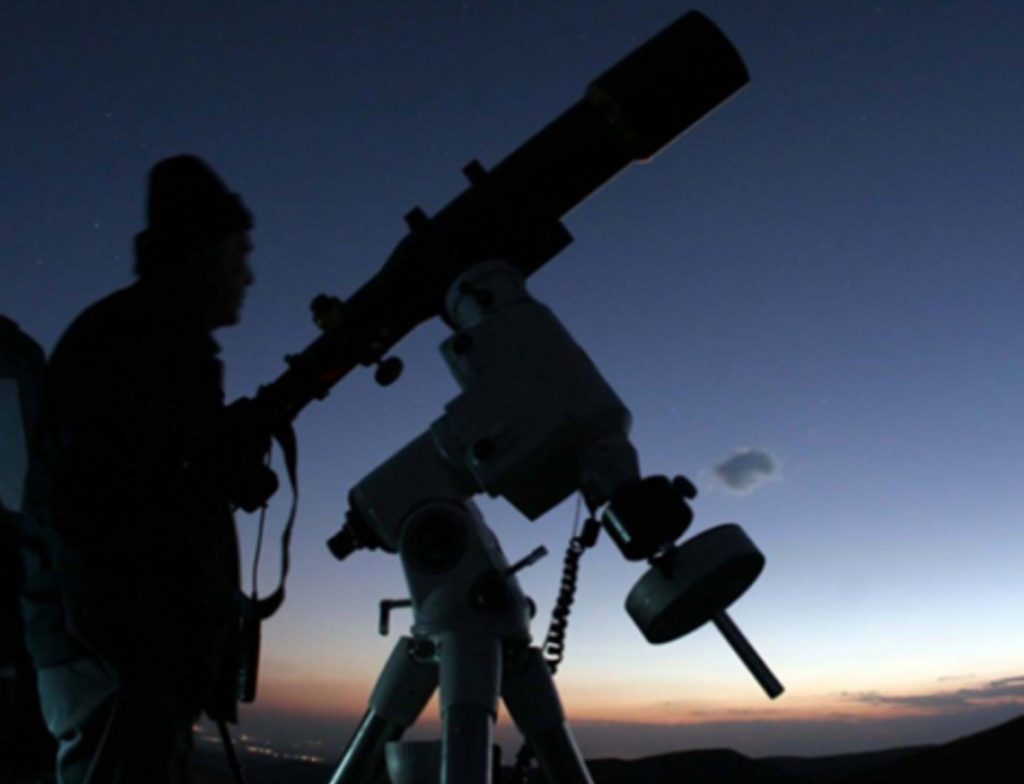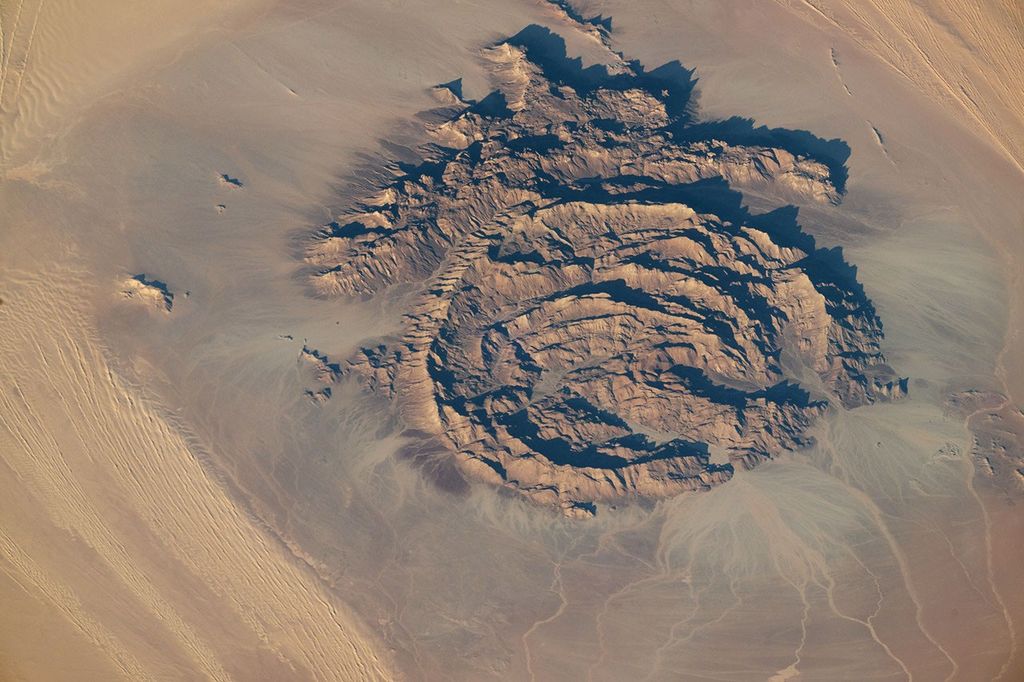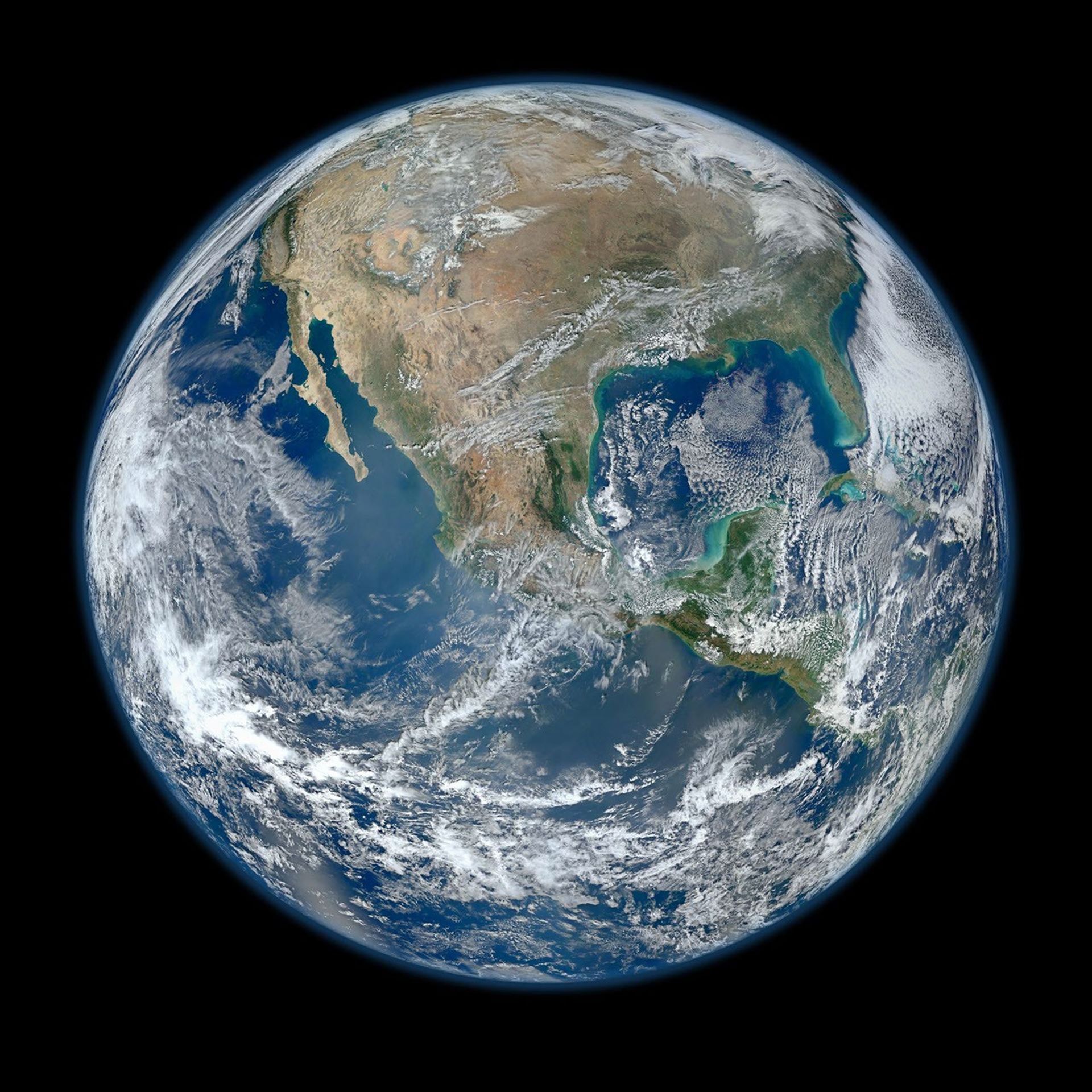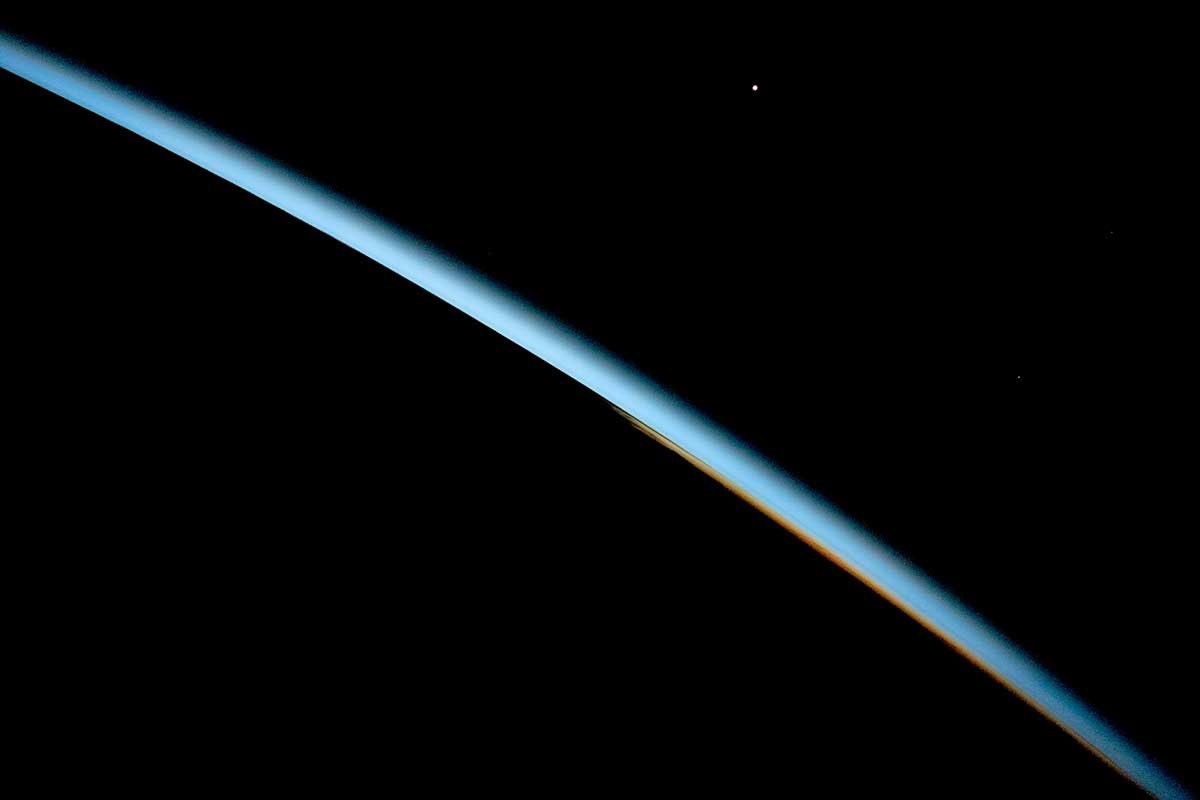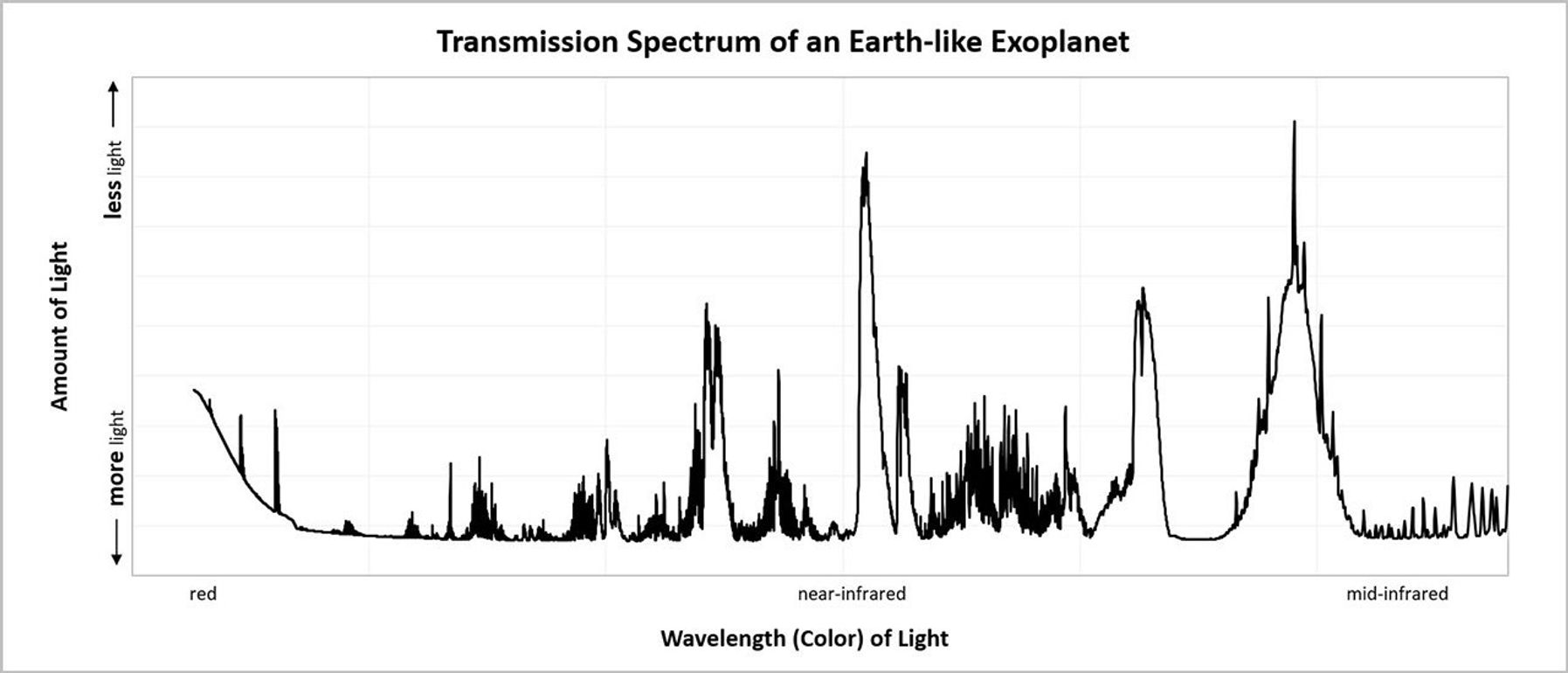What would Earth’s atmosphere look like from the James Webb Space Telescope?
If Earth were an exoplanet orbiting a distant star, what could we find out about the composition of its atmosphere?
With the power to collect and measure thousands of colors of faint red and infrared light, Webb would be able to detect clear evidence for water vapor, carbon dioxide, oxygen, methane, and many other molecules that make up Earth’s atmosphere.
A Brief Disclaimer
Webb won’t be studying Earth.
First of all, let’s be clear: The James Webb Space Telescope will not be observing Earth. Earth is quite warm, so it emits a lot of infrared energy—the type of light that Webb is designed to detect. From a distance of just a million miles, Earth would appear so bright in the infrared that it would quickly burn out Webb’s detectors. To make things worse, because of the way Webb orbits, if it were ever to look at Earth, it would also be staring straight into the Sun. This would instantly destroy the telescope.
Webb won’t be looking at Earth, but it will observe more distant planets in the Solar System as well as exoplanets orbiting other stars. Some of these exoplanets may be very similar to Earth.
Why do we care what Earth would look like from Webb?
Earth is our standard for comparison.
Although Webb won’t be studying Earth, it is useful to think about what it would see if it were to look at a planet just like Earth. Earth is a standard that we use for comparison: Our understanding of other planets is based on what we know from studying Earth up close.
We know that rivers flowed on Mars because there are valleys that look just like river valleys on Earth. We know that rocks have smashed into the Moon because it’s covered in round holes that look like impact craters on Earth. We discovered that Venus’s atmosphere is mostly carbon dioxide (CO2) based on observations of Earth’s atmosphere and lab experiments that show what carbon dioxide gas in an atmosphere “looks like.”
When Webb observes exoplanets that we think could have Earth-like atmospheres, we will use what we already know about the composition and structure of Earth’s atmosphere (and atmospheres of other planets in the Solar System) to interpret the observations.
What do we mean when we ask what Earth’s atmosphere would “look like”?
We’re actually talking about Earth’s transmission spectrum.
If we look at Earth from a satellite, we can easily things like clouds, dust, smoke, and ash, which are made of small particles that reflect sunlight. The gas portion of the atmosphere is essentially invisible to human eyes, but if we look at Earth’s limb—the boundary between the ground and space—we can make out a thin hazy bluish layer because of the way it scatters sunlight.
As powerful as Webb is, however, it would not provide images like these. Exoplanets are simply too small and too far away to image in such great detail. In addition, Webb will observe red and infrared light, not visible light: Even if it could get a close view of Earth, it would capture different details.
What Webb would be able to detect, however, is sunlight that has passed through Earth’s atmosphere as Earth transits, or travels in front of, the Sun. Even better, Webb would be able to spread out that light to measure the precise amounts of individual colors, or wavelengths, of red and infrared light that make it through the atmosphere. The data could then be plotted on a graph to show Earth’s transmission spectrum.
What would Earth’s transmission spectrum look like from Webb?
A graph of sunlight that has been filtered through Earth’s atmosphere would look like this:
This graph shows the relative amount of each wavelength of light that makes it through Earth’s atmosphere. Notice that the amount of light increases from top to bottom: Valleys indicate more light and peaks indicate less.
How is a transmission spectrum useful?
A transmission spectrum helps us figure out what an atmosphere is made of.
If you like visualizing data, the graph of a transmission spectrum can be quite appealing in itself. But what is really important about a transmission spectrum is what it can tell us about an atmosphere.
Although the gases that make up Earth's atmosphere are invisible to human eyes, the atmosphere isn’t completely transparent. On a microscopic scale, many wavelengths of light are blocked, not only by large particles that make up things like clouds and dust but also by individual atoms and molecules that make up the gas. A transmission spectrum shows how much each wavelength of sunlight has been blocked—details that human eyes can’t discern.
More importantly, a transmission spectrum can be used to figure out exactly which gases are blocking the light, and therefore what the atmosphere is made of. We know from lab experiments that different types of atoms and molecules absorb different combinations of wavelengths: Each gas has a unique absorption spectrum, a “signature” or “fingerprint” that can be used to identify it. An atmosphere’s transmission spectrum is basically the sum of many different absorption spectra layered on top of each other. By analyzing the combined pattern of colors that are blocked, we can infer what gases make up the atmosphere and the relative abundances of each gas.
Earth’s transmission spectrum reveals the presence of water vapor (H2O), carbon dioxide (CO2), oxygen (O2), ozone (O3), methane (CH4), and many other molecules in the atmosphere. Webb would not be able to detect life itself on Earth, but it would show that Earth’s atmosphere contains essential components like water, carbon dioxide, oxygen, and ozone.
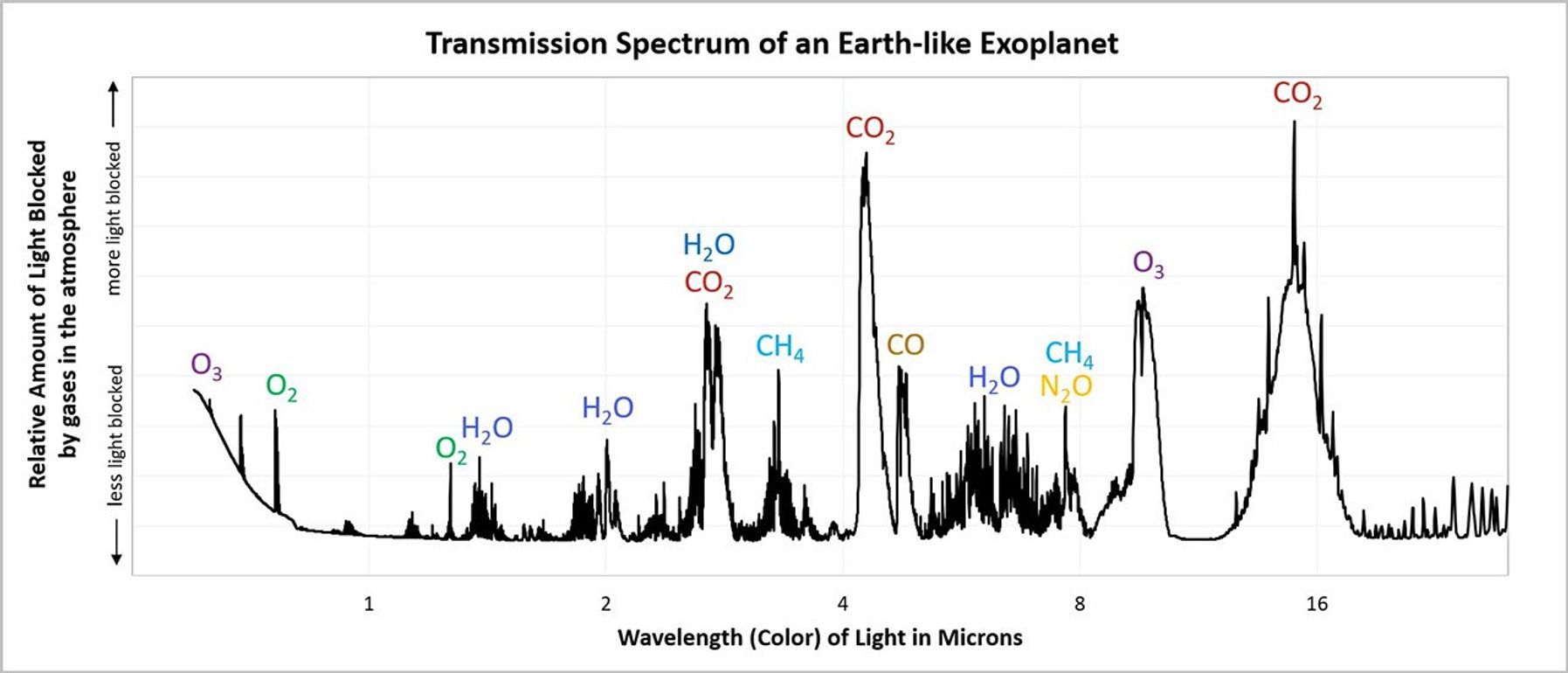
Of course, we already know that Earth’s atmosphere contains water, carbon dioxide, oxygen, ozone, and methane (as well as other gases, like nitrogen and argon). We don’t need a transmission spectrum from a space telescope to analyze Earth’s atmosphere; we can just collect samples of air and analyze them in a laboratory.
But when it comes to exoplanets, we rely on remote observations.Transmission spectroscopy will be our main method of analyzing planetary atmospheres—our main way of determining whether or not a distant exoplanet could have an atmosphere that is conducive to life.
If we know what Earth’s transmission spectrum would look like from Webb, we can use it for comparison. If we are particularly interested in planets with atmospheres similar to Earth’s—planets that may be habitable, or even inhabited—knowing what Earth’s transmission spectrum looks like helps us plan our observations, interpret the results, and someday (with the help of other future telescopes) answer the question: Are we alone?














